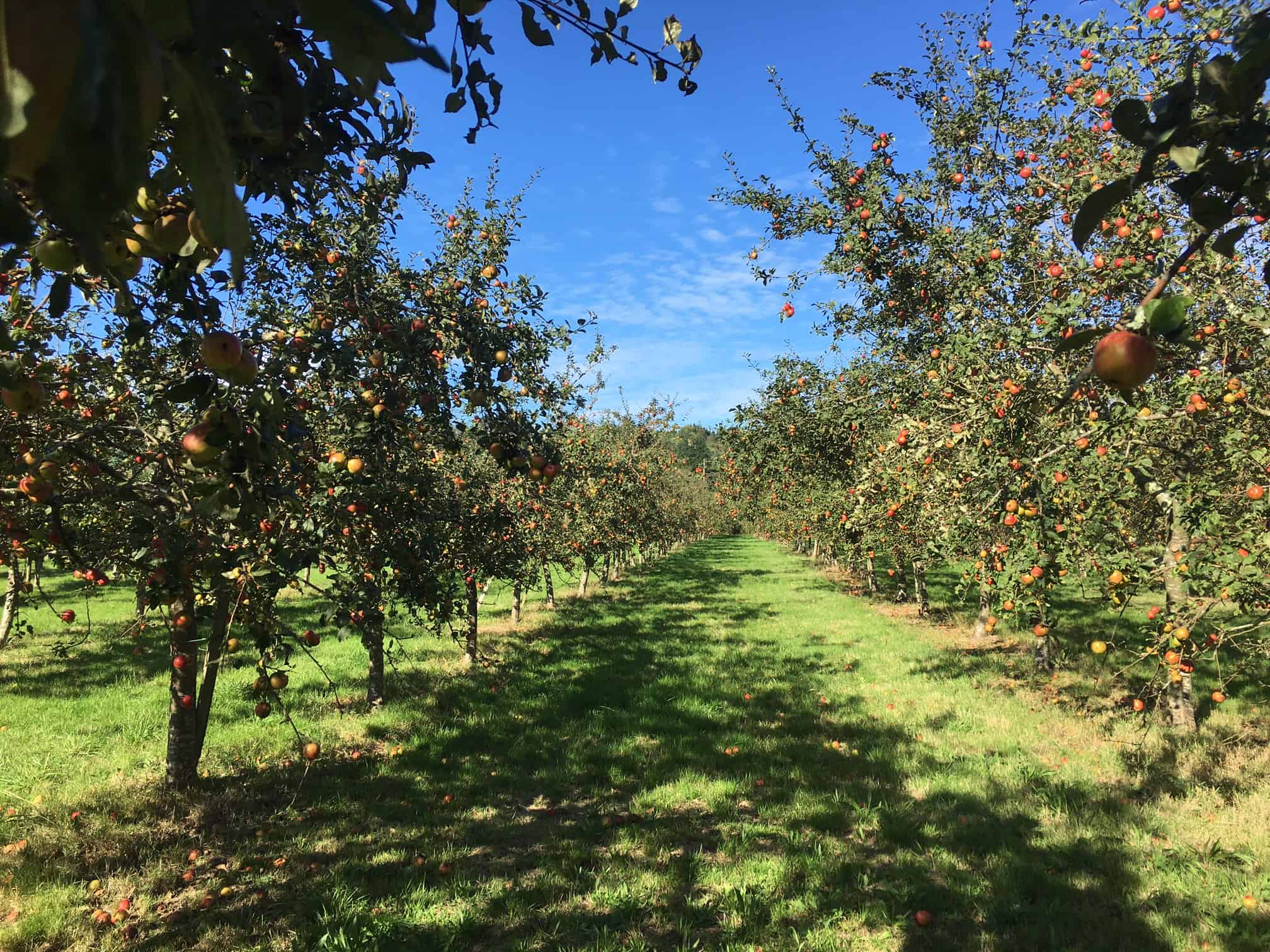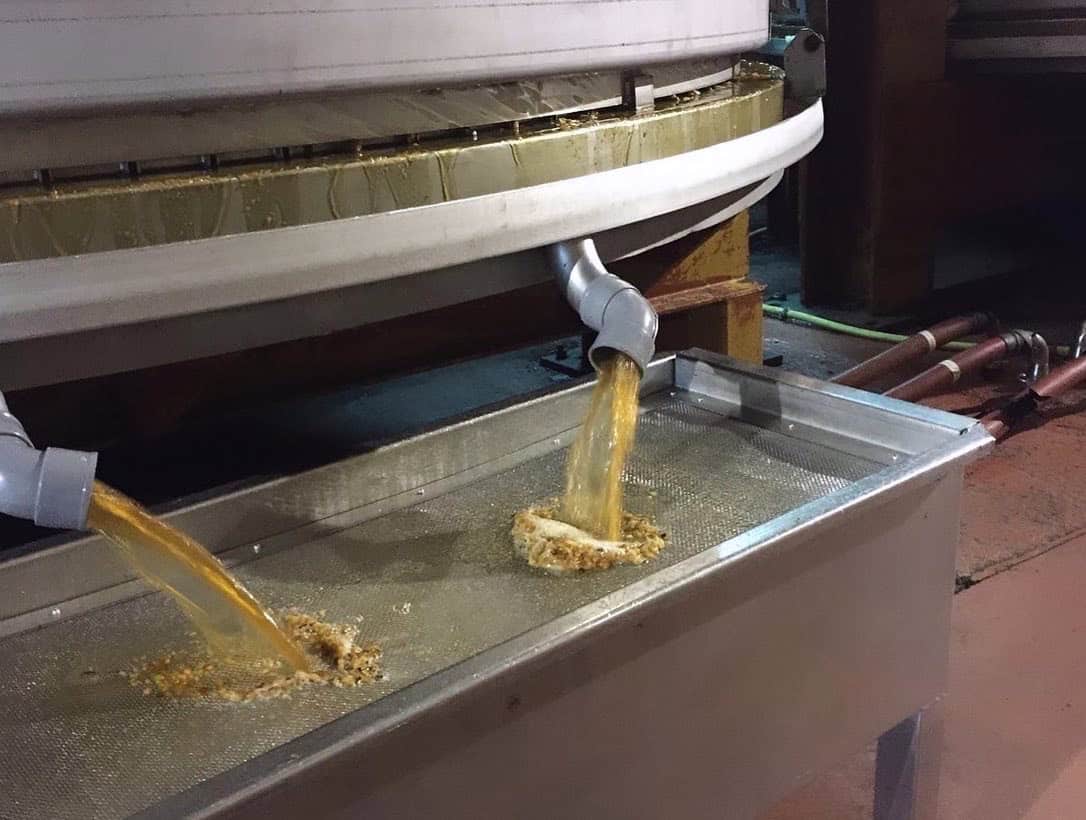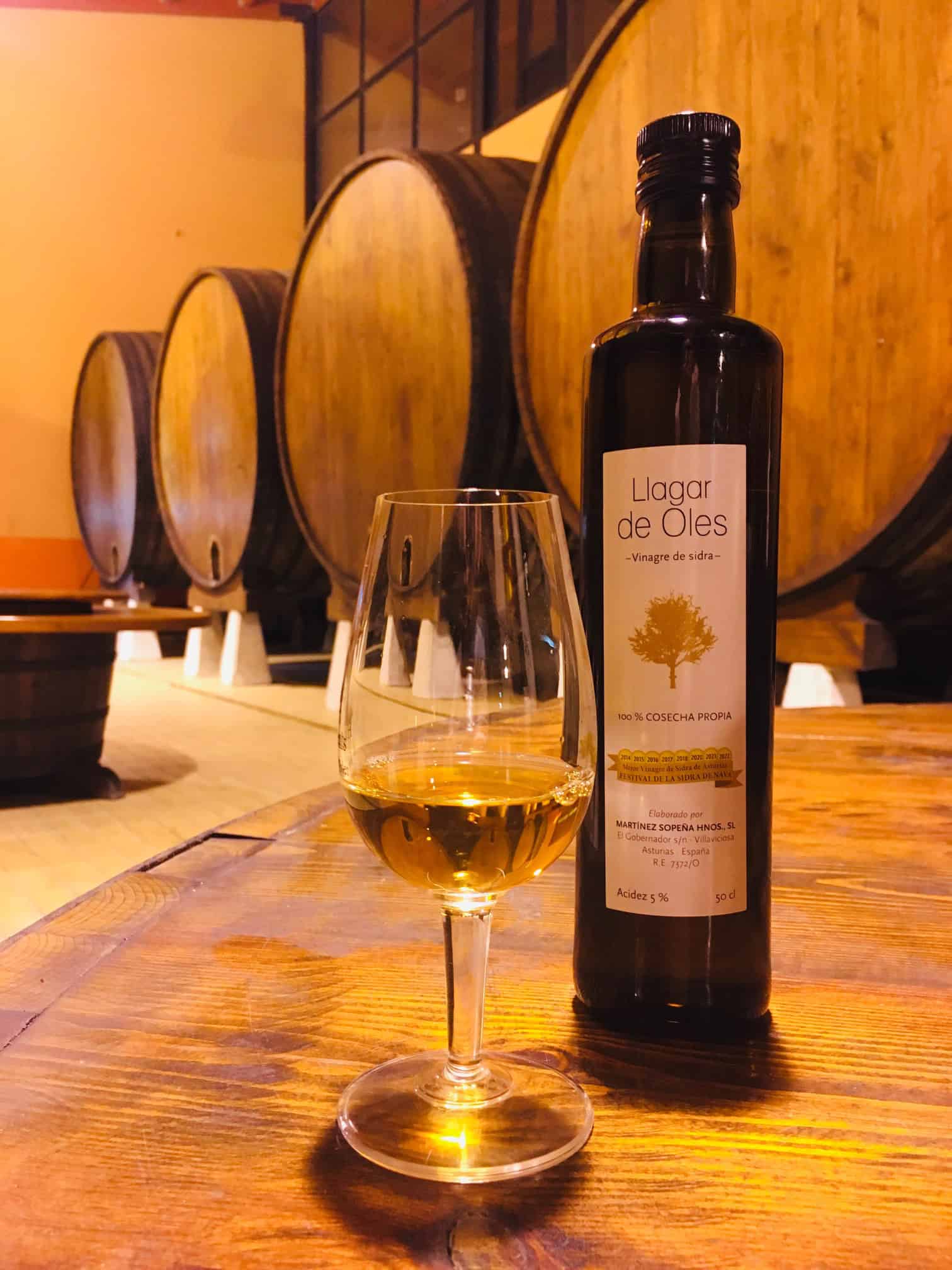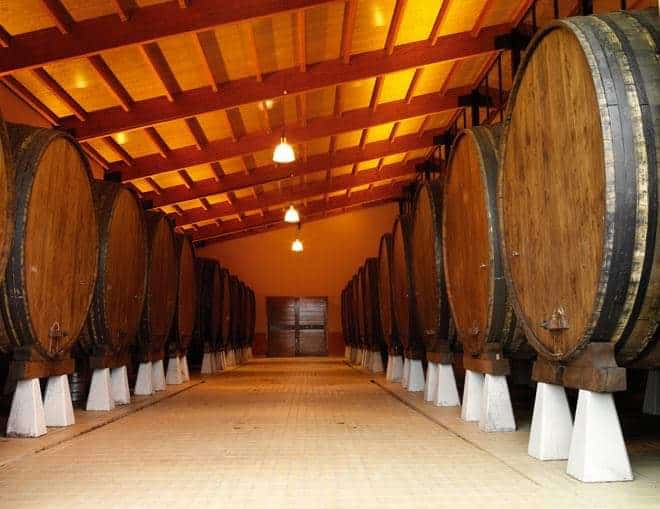Asturias is known for its deep rooted cider tradition, but behind the legacy lies another, quieter craft: cider vinegar. Made with the same care and respect as the region’s iconic sidra natural, this vinegar captures the soul of Asturias. Rogers Collection is proud to introduce Llagar de Oles Cider Vinegar to the U.S., an artisanal product from the Martínez Sopeña brothers that honors both land and tradition through the slow, natural Orléans aging process.

Asturias Cider History
For centuries, Asturian cider culture has been a staple of the Spanish region. First recorded by the Greek geographer Strabo, who noted in the 1st century B.C. that “the Asturians have a drink they call Zythos, made from fermented apple juice.” By the mid 1800s, cider had become an important part of the regional economy, with over 250 apple presses operating throughout Asturias. The same is still true today; making up 80% of Spanish cider production.
The Asturian cider-making tradition is deeply tied to local culture, and cider is an integral part of social life. The process of making traditional cider, called “sidra natural,” is still done by hand in many small cider houses (known as “llagares”). Using a natural fermentation process that includes the wild yeast found on apple skins results in a cider with a distinct cloudy appearance and flavors unique to the maker’s apple varieties.
Asturias cultivates nearly half of the world’s apple varieties. In many rural homes, families maintain pomaradas—apple orchards used to grow fruit for personal consumption, cider-making, or sale to local producers.

Regional Significance
Cider bars in Asturias are called a “Chigre,” whereas in the rest of Spain, they are called a “Sidreria.” Originally created as a meeting place for working class individuals to enjoy the cheap alternative to wine, today fill the streets of Asturias.
Unlike most drinks, Asturias cider is thrown or dropped, rather than poured. This traditional way of serving natural cider emerged in Asturias sometime in the 19th century and involves ceremonious staging, skill and dexterity that is continually put to the test in regional cider pouring championships.
The reason cider is served this way is not just to show off the talent the bartender has. When cider is dropped from the right height and breaks properly against the rim of a glass it releases a blast of effervescence, bringing the cider to life. The natural cider making process does not result in bubbles in the bottles, when dropped from the correct height and angle, enough air is added to the cider for a light carbonation.
While it does serve a technical purpose, the art of serving cider is a very social act. The ritual breaks down barriers and brings people together. Traditionally, a single glass is used to represent the unity of the group as it is passed from hand to hand in a gesture of trust and community. While recent global events have led to individual glasses, the experience of drinking cider is still an incredibly social and meaningful event.
In 2024, Asturian cider culture was inscribed by UNESCO as an Intangible Cultural Heritage of Humanity. Cider culture being described as the spaces and processes for producing, serving and enjoying natural cider in Asturias. Cider, a symbol of local identity, is seen as the embodiment of the relationship between rural communities and their environment. Plus Asturias hosts the highest cider consumption in Spain with an average of 50 liters per person a year!

History of vinegar in Spain
Sherry vinegar has long been the vinegar of choice in Spain. With a rich history dating back thousands of years, it is believed to have originated from a winemaking mishap. Today, sherry vinegar is a key ingredient in Spanish cuisine and, like Italian balsamic, is protected by strict rules and regulations regarding its production and labeling.
As apple and cider production increased over the past three centuries, spoiled apples and batches were often set aside for home cooking, giving rise to apple cider vinegar.
Now, as producers explore the potential of this traditional byproduct, they are encouraging chefs to incorporate apple cider vinegar into the kitchen. It’s increasingly found in marinades, sauces, and salad dressings. Like many cider makers in Asturias, the Martínez Sopeña brothers only use apples grown on their own land, bringing distinct character to this age-old process.
Martínez Sopeña Brothers
In 1993, brothers Roberto and Francisco Martínez Sopeña decided to develop an idea that was slowly being built in their minds. Aiming to bring new practices to the rich and delicate traditions of Asturias, the brothers began the adventurous journey.
While the Martínez Sopeña are first generation llagareros, their relationship with cider began many years ago from a very young age they had run the well-remembered El Faraón cider house in Villaviciosa.
As the operation blossomed, the flagship product – El Gobernador Natural Cider gave the operation recognition in the region. Over time, innovation and collaboration with the Regulatory Council of the PDO Sidra de Asturias, developed new products; including the Llagar de Oles Vinagre de sidra.

What is the Orléans Method
The Martínez Sopeña brothers utilize a completely natural process to turn their apple cider into vinegar. The Orléans process involves oxidizing and aging cider in chestnut wood barrels. It is known for producing high-quality, flavorful vinegar with a smoother, more complex profile than industrial methods. The Orléans process usually includes adding starter culture that kicks the process into effect. The beauty of Asturias and their immense collection of apple varieties means the unique blend of apples selected off the Martínez Sopeña property contain enough of the natural bacteria required.
The five month process begins in the fall following the harvest, where apples are pressed into raw juice. From there, cider is barreled and aged for at least three months where yeast comes alive to create the iconic regional product.
After racking the cider, a process to purify and aerate the beverage, the cider is returned to chestnut barrels, this time with the lids off to expose the soon to be vinegar to the natural environment. Once the correct acidity level is reached, lids are added to age the vinegar creating the final aromas and textures.
Llagar de Oles vinegar is more than an ingredient, it’s a reflection of Asturias itself: rugged, refined, and rooted in tradition. With each barrel-aged batch, the Martínez Sopeña brothers bring generations of cider-making knowledge into the kitchen. Now, Rogers Collection, brings this remarkable vinegar to chefs and home cooks in the U.S., offering a bold, nuanced expression of one of Spain’s most cherished food cultures.
Awards
Llagar de Oles has racked up its fair share of awards over the last decade. Asturias, the cider capital of the world, hosts the Festival of Cider and Derivatives of Nava. The Martínez Sopeña brothers have brought home the Best Cider Vinegar award every year since 2014.
What to do with apple cider vinegar
Here at Rogers we love apple cider vinegar, some of our favorite uses for this versatile ingredient include salad dressing, marinades, quick pickles or my personal favorite – homemade, gut-friendly soda.
All it takes:
1 TBSP apple cider vinegar
1/2 – 1 TBSP honey, maple syrup or any other natural sweetener (adjust amount based on taste)
1 can or 12 oz seltzer water – lemon or lime flavored adds the perfect citrus note
Written by: Eli Zelonish